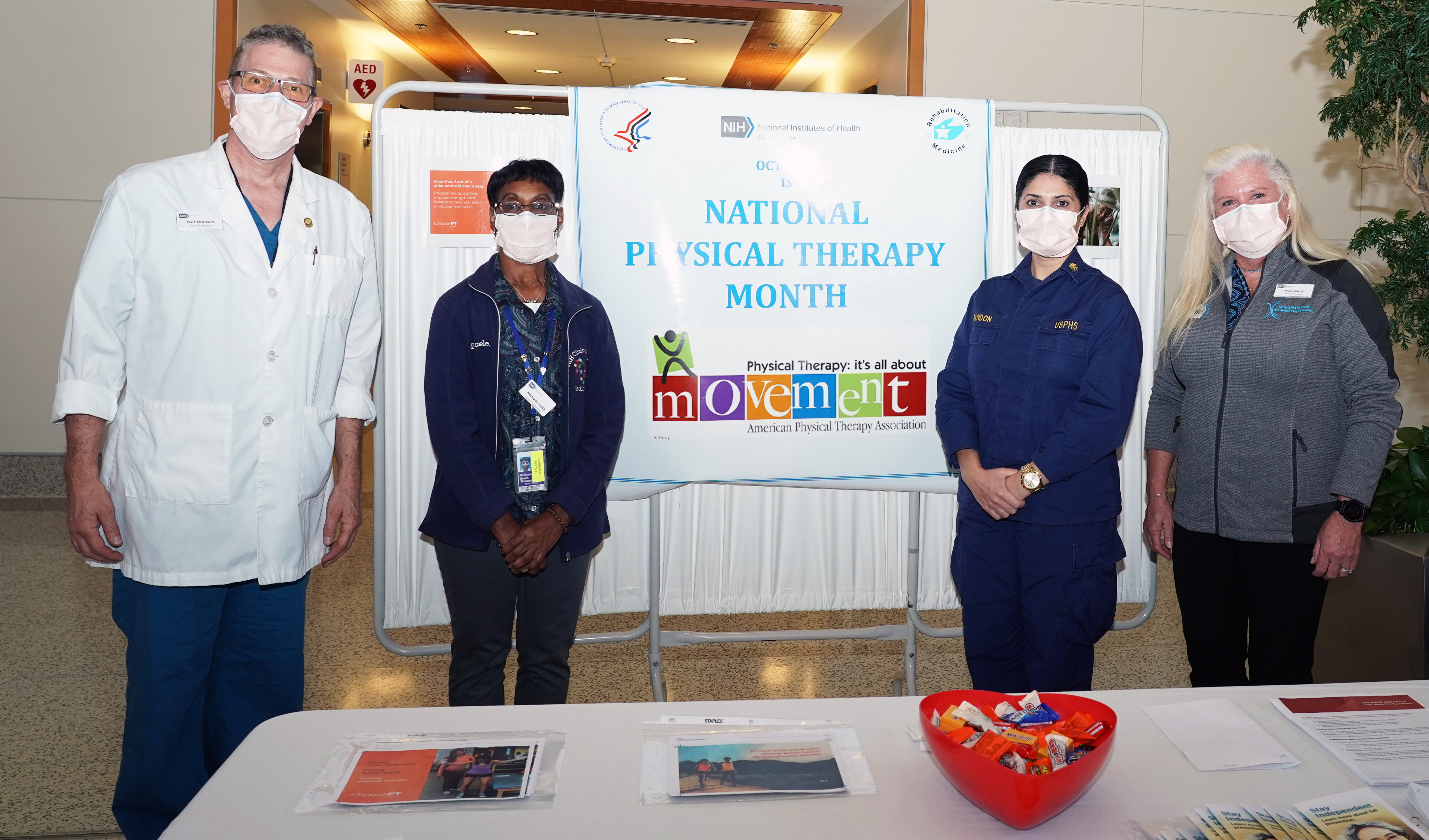Physical Therapists focus on preventing falls
Clinical Center celebrates National Physical Therapy Month

Physical Therapists are vital in working with patients in preventing falls. The Center for Disease Control and Prevention (CDC) ranks falls among the leading cause of fatal and nonfatal injuries among older adults in the United States. More than 1 out of 4 older adults fall each year. Physical therapists help improve strength and balance to help people avoid and recover from a fall. Physical activity reduces the risk of falls and fall-related injuries in older adults.
The CDC’s Stay Independent brochure lists four things you can do to prevent falls:
- Speak up. Talk openly with your healthcare provider about fall risks and preventions and ask your doctor to review your medicines.
- Keep moving. Begin an exercise program to improve leg strength and balance.
- Get an annual eye exam.
- Make your home safer. Remove clutter and tripping hazards.
More resources:
The Physical Therapy (PT) Section of the NIH Clinical Center’s Rehabilitation Medicine Department wants you to stay on your feet.
In celebration of National Physical Therapy Month, the hospital’s PT professionals hosted two informational booths to highlight the role staff play in the prevention of falls. Previous celebrations focused on an outdoor walk and ergonomics awareness for employees.
To ensure COVID-19 safety, there were no group or individual activities planned this year. Event organizers followed social distance guidelines outlined by the hospital and provided hand sanitizer for all participants.
Physical Therapists are key collaborators across the treatment continuum in the hospital’s Rehabilitation Medicine Department, working in clinical patient care and research support. They help treat inpatients and outpatients participating in various protocols throughout all of the NIH institutes and work on research studies as associate investigators.
As licensed medical professionals, PTs identify, diagnose and treat movement problems in people of all ages and abilities. These professionals work in a variety of healthcare settings including outpatient clinics, private practices, hospitals, rehabilitation facilities, nursing homes, home healthcare, sports and fitness locations, schools, hospice facilities, occupational locations, government agencies and research centers.
Physical Therapists help maximize their patients’ quality of life through hands-on care, patient education and prescribed movement. As licensed medical professionals, they treat patients with diverse illnesses and injuries. They can be called upon to assist infants meet developmental milestones, rehabilitate knee injuries in high school athletes, assist patients recovering from a traumatic brain injury or help an older adult recovering from cancer treatment.
- Lt. Zavera Brandon and Joan Elliott, DPT